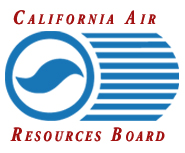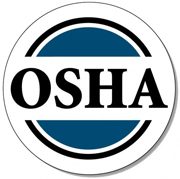Diesel Exhaust Scrubber Systems
Diesel Exhaust Purifier Scrubbers – Installation
1a. The Diesel Exhaust Purifier Scrubber should be located close to the outlet of the engine exhaust manifold or close to the turbocharger. The diesel exhaust purifier scrubber should be located no more than 30” (760 mm) from the engine exhaust manifold outlet or turbocharger. In addition diesel exhaust purifier scrubber should be located between the engine exhaust manifold (or turbocharger) and the muffler. In order to eliminate harmful diesel exhaust gas pollutants, as much exhaust heat energy as possible is required for proper purifier operation. The hotter the exhaust gases at the inlet cone of the purifier, the more heat energy is available to oxidize (reduce) harmful exhaust gas pollutants. The diesel exhaust purifier scrubber can be installed vertically or horizontally. Do not allow the diesel exhaust purifier scrubber to come into contact with any structural members of the vehicle or equipment. Avoid locating the diesel exhaust purifier scrubber in close proximity to electrical components, fuel lines, fuel tanks, or any combustible materials.
If it is impossible to locate the diesel exhaust purifier scrubber between the engine’s exhaust manifold (or turbocharger) and the muffler, then we recommend installing the purifier immediately after the muffler. We recommend that the full length of exhaust pipe, the muffler and the purifier be insulated with a commercially available heat wrap tape. Contact our sales office for additional heat tape wrap information. Alternately, we manufacture a large variety of combination purifier mufflers for Case, Caterpillar, Bobcat, Gehl, Genie, Honda, Ingersol Rand, JCB, John Deere, Kohler, Komatsu, Kubota, New Holland, Wagner, Takeuchi, Thomas, Wisconsin, etc... In some circumstances the use of purifier mufflers may be the only emission control device that will fit your machine.
 1b. To Install the diesel exhaust purifier scrubber cut the appropriate length of exhaust pipe from the existing engine exhaust system. Generally the pipe length to be cut is approximately 1.5" (38 mm) to 2.5” (64 mm) less than the overall length of the exhaust gas purifier. The required pipe length to be cut will vary depending on the particular exhaust purifier model. Alternately, measure the distance between the stop pins located on the purifier inlet / outlet cones to determine the required cut length.
1b. To Install the diesel exhaust purifier scrubber cut the appropriate length of exhaust pipe from the existing engine exhaust system. Generally the pipe length to be cut is approximately 1.5" (38 mm) to 2.5” (64 mm) less than the overall length of the exhaust gas purifier. The required pipe length to be cut will vary depending on the particular exhaust purifier model. Alternately, measure the distance between the stop pins located on the purifier inlet / outlet cones to determine the required cut length.
 2. Use the directional flow arrow located on the exhaust gas purifier label to orient the exhaust flow direction of the diesel exhaust purifier scrubber. Install the exhaust pipe into the purifier inlet / outlet cones until the exhaust pipe butts up squarely against the stop pins of the inlet and outlet cone.
2. Use the directional flow arrow located on the exhaust gas purifier label to orient the exhaust flow direction of the diesel exhaust purifier scrubber. Install the exhaust pipe into the purifier inlet / outlet cones until the exhaust pipe butts up squarely against the stop pins of the inlet and outlet cone.
3. Once the diesel exhaust purifier scrubber is installed into the exhaust pipe, use wide band muffler clamps, flat band clamps, or seal strap clamps to secure the purifier. We recommend using "Easyseal", "Torctite", or "Accuseal" wide band clamps (manufactured by Nelson, Donaldson, Riker, Stemco). Wide band clamps are readily available at local truck exhaust parts or truck parts jobbers / suppliers. Alternately, ARC or MIG welding can be used to weld the exhaust purifier inlet / outlet cone directly to the engine exhaust pipe. Use type SS309 filler wire or rod with a DC current of approximately 40 to 45 Amps maximum. Do not weld onto any other part of the purifier or purifier body.
4. Torque the wide band muffler clamp bolts to the correct torque specification. Usually 45 to 55 foot pounds torque is sufficient. Start and idle the engine for a period of 15-20 minutes. Re-torque the clamp bolts to the correct specification. Check for any apparent exhaust leaks.
5. Once installation of the diesel exhaust purifier scrubber is complete, the engine exhaust backpressure restriction should be measured. Use a backpressure gauge / manometer (0 to 40" H2O range) to measure the exhaust gas flow restriction. Remove the 1/8" NPT brass plug located at the 1/8" NPT port on the inlet cone of the purifier. Install the metal probe of the exhaust backpressure restriction gauge to the port. Start the engine and operate at high idle and load stall conditions. Measure and note the exhaust gas restriction at both high idle and load stall conditions. Ensure that the total exhaust gas flow restrict ion is within the engine manufactures recommendations.
6. During engine operation avoid all personal contact with the purifier. After engine shutdown avoid all personal contact and do not allow the purifier to come in contact with any combustible objects. When re-fueling, adding lubrication oil, adding coolant, adding hydraulic oil or during any periodic maintenance ensure that the engine is shutdown and that the surface temperatures of the purifier have cooled to ambient temperatures, Avoid re-fueling and avoid any contact of any form when the catalytic purifier is hot. If you have any questions please call 1-800-551-5525 for additional information.












































